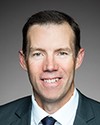Absolutely.
First, as to why this is working so effectively, as I was just saying to Jenny, we are so new in our operations that we're working really hard to get some of that data that will really show some of the effectiveness. That's why we're working with evaluators right now.
In terms of what would happen before, John, first, child and family services has to be able to make that call. Then you're waiting for that police officer to get back to you, right? That could take a couple of days. You're waiting for that physician to let you know if this was intentional harm before you can actually apprehend or the police can charge.
Right now, with everything in one house basically, they're meeting constantly and they're doing their case plans together. They're sitting down together. A child and family services worker is five feet from those police officers. They're integrating their planning, their responses. They work as a team continually. The physician is sitting at triage. They're able to teach and learn and support each other in that environment.
Does that answer the question in terms of the culture we have?



